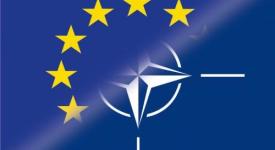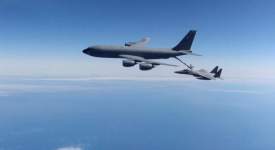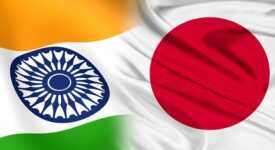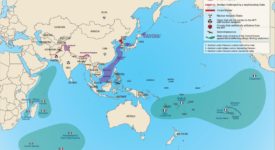The deep and heavily institutionalised model of the EU cannot possibly be applied to different economic and geographic conditions and it thus does not seem right to measure other integration models only from the EU perspective.
It can be demonstrated that the level of economic integration in ASEAN does not lag behind the EU’s achievement that much as is usually stated by solely political or institutional analysis. On the contrary, especially the ASEAN’s resilience during economic crises can serve as a vital example for the EU itself. The EU should no longer serve as the only pattern of integration to be followed – Brussels and the individual EU member states should rather learn lessons from other regions’ experience: ASEAN’s own pace and approach to economic integration, inspired by its own crises it went through, can offer an especially important one.
It is a well-known fact that institutional economic regionalism has come late to South East Asia, especially when compared to Europe. Evolving trade, financial, business and other networks have led to an increased economic interdependence in the region. Nevertheless, Asian countries did not look for any formal economic cooperation until the second half of the 1990s. Before the 1997 Asian financial crisis, there was an emphasis on unilateral, non-discriminatory liberalization, which later found its rationale under the GATT Uruguay Round agreements. In spite of a quick liberalization, effective rates are still well above the EU, which shows a marked difference between de facto liberalization in both regions.
In 1992, member countries agreed to establish the ASEAN Free Trade Area (AFTA) through a Common Effective Preferential Tariff scheme by 2010 or 2015. In spite of delays and weak results, the ASEAN leaders agreed (Bali Concord II) to achieve a single market by creating the Asian Economic Community (AEC) by the year 2020. Many authors suggest that ASEAN is going to take a central stage of regional institution building in South East Asia. The cornerstone of the AFTA efforts lay namely in facilitating further expansion of FDI inflow into the region as a part of its growth strategy. Lower shares of intra-trade were thus often seen as no barrier to continuing success in other parts of AFTA’s goals.
From the standpoint of the regionalism theory, the shallow, south-south integration schemes, such as the newly concluded agreements by ASEAN countries, go well beyond reduction or elimination of tariffs and non-tariff barriers. They also contain provisions on free trade in services and capital; common rules and provisions concerning other areas (e.g. intellectual property protection, harmonization of competition policies, anti-dumping measures and safeguards etc.). As opposed to supranational legal system of the EU, AFTA is a market-oriented, not-binding (flexible) integration and its decision-making style has been consensual. One cannot, however, assess it as ineffective as far as its specific goals are concerned.
After the Asian financial crisis, major economic and political changes in Asia have occurred. There was a significant loss of confidence in South East Asia’s economic dynamism. Asian countries have recognized the need of a certain form of regional framework to complement or support the functions of the International Monetary Fund (IMF) – to that end, they have been criticising the IMF and other organizations for their failure to address and deal with the financial crisis. After the crisis, many countries have started economic and structural reforms to attract foreign investments and overcome the crisis, which became one of the important driving forces behind free trade agreements (FTAs) promotion. East Asian regionalism thus entered new way of macroeconomic harmonization, a process that had hitherto been characteristic only for the deepest regional integrations, such as in the EU. However, unlike in the EU, in East Asia, there was no trend towards decreasing states’ influence in monetary policies, whereby this also ruled out the possibility of creating a monetary union in the region.
Though the formation of “East Asian Monetary Union” is often discussed, it is still very premature. The regional economies have, however, accelerated monetary and financial cooperation in different ways, including banking reform, bond markets, or exchange rate policies. In 2000, the ASEAN+3 countries agreed to a currency swap mechanism, the so-called Chiang Mai Initiative. This agreement is designed to supplement emergency loans from the IMF and World Bank by improving regional cooperation. All in all, similar patterns can be observed in the regional exchange rate policies as well as financial conditions that underpin investments and savings, which in some aspects probably proved to be a much closer real economic policy coordination than EU was able to develop on the eve of the current crisis. East Asian countries’ policies soon resulted in significant increase in international reserves and current accounts whereby both these indicators proved to be very useful in dealing with the current crisis.
Another strong integration stimulus was the rise of the Chinese economy and the growing rivalry between China and Japan. In 2001, China became a member of the World Trade Organization (WTO) and, in 2002, it agreed to form the FTA with the ASEAN in the period of 2010-2015. Beijing also started to negotiate many FTAs with Asian and other countries. Similarly, Japan did not participate in any preferential trade agreement (FTA) before 2002. Nowadays, Japan cannot afford to stand outside any sort of South East Asian integration, which could become a platform for Chinese power. As a commentary in The Economist noted, “a better strategy will be to use regional institutions and treaties to dilute China’s influence, establishing a framework of rules and procedures within which both countries will have to operate but which also offers the chance for Japan to build alliances with other Asian democracies.” Yamazawa calls this process “competitive liberalization”, which means that “if a certain number of economies form a group and reciprocally open up their markets and ease regulations within it, outside nations that fear discriminatory treatment will have an incentive to join the group or form different free trade group”.
There are, of course, many problems and obstacles concerning Asian regionalism. From the sectoral point of view, agriculture is a central problem in majority of regional initiatives. For many East Asian countries, agriculture still represents a major source of employment. Thus, there is a general consensus that it should be treated as a separate issue. However, in the future, it would be in the interest of almost all countries in the region to include agriculture in FTAs agreements. The quickly spreading, overlapping membership that is often referred to as “Asian noodle bowl” also raises a number of specific questions. It can result in the duplication and unclear tariff concessions and rules of origin. Moreover, it raises the cost of negotiating, implementing and administering FTAs.
When compared with the EU, ASEAN model based upon consensus and respect for national differences clearly works as a less institutionalised form of integration (which is not so exceptional among other south-south New Regionalism groupings). This light institutional layout is often criticized as ineffective in eliminating non-tariff barriers – the EU itself first needed to create a supranational legal system to completely abolish non-tariff barriers to trade by their mutual recognition. Levels of trade integration, FDI inflows and other economic results, on the other hand, show that this light model has generated enough success so far. It also demonstrated an extraordinary resilience during the Asian economic crisis in the late 1990s, which did not lead towards general stagnation of the integration efforts, but rather to further plans and steps towards deeper economic integration including closer economic policy coordination among the ASEAN member states. This led to convergence in savings and reserve rates as well as to very similar patterns in current account developments.
The so-called ‘ASEAN Way’ thus seems to respect national differences, while also enabling the ASEAN states to coordinate their common effort towards greater regional integration. This common destiny and shared vision of ASEAN are especially important when comparing them to current outcomes of the EU integration process in the context to the ongoing Euro debt crisis. Even though the deep EU model has lead towards monetary union – that ASEAN is unlikely to achieve any time soon – the common destiny and political will to share the costs of the process does not seem very persuasive today.
On the contrary, the growing European imbalances reflect embedded weaknesses stemming from a hasty economic integration. As such, Brussels is now confronted with large macroeconomic imbalances that even the EU’s deeply institutionalized model of economic coordination cannot cope with. The EU thus should no longer serve as only pattern of integration to be followed – Brussels and the individual EU member states should rather learn lessons from other regions’ experience: ASEAN’s own pace and approach to economic integration, inspired by its own crises it went through, can offer an especially important one.
This article was co-authored with Dr. Zuzana Stuchlikova, a researcher at Department of World Economy, Faculty of International Relations, University of Economics, Prague.







